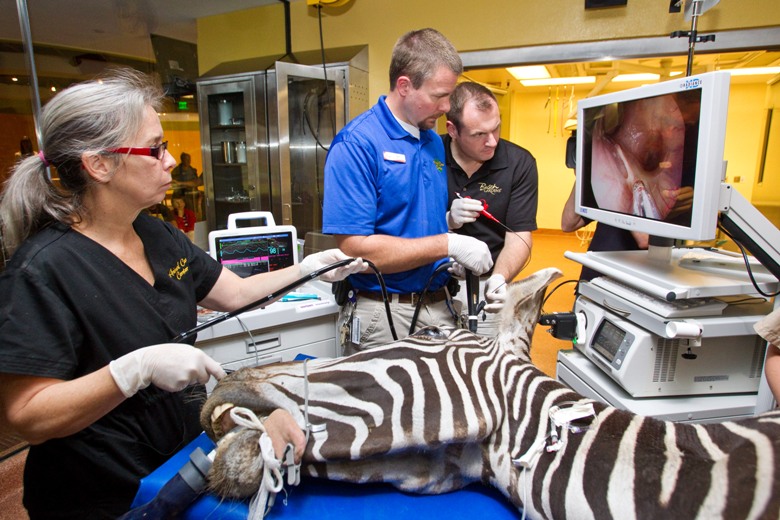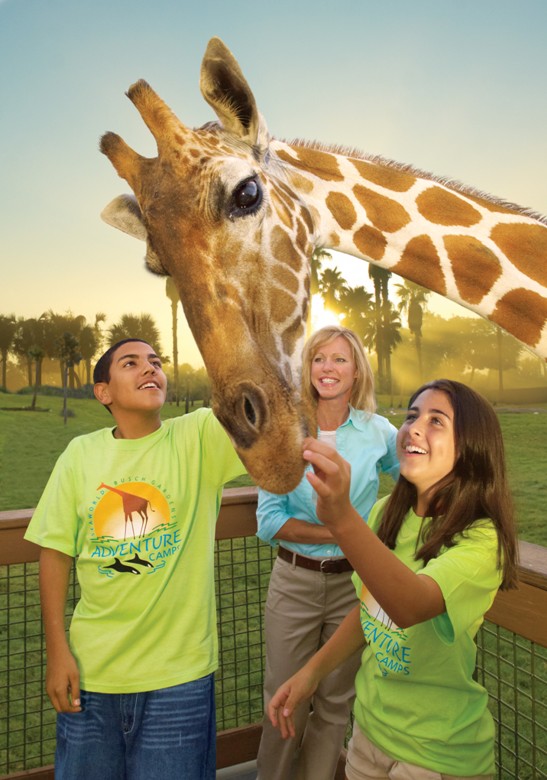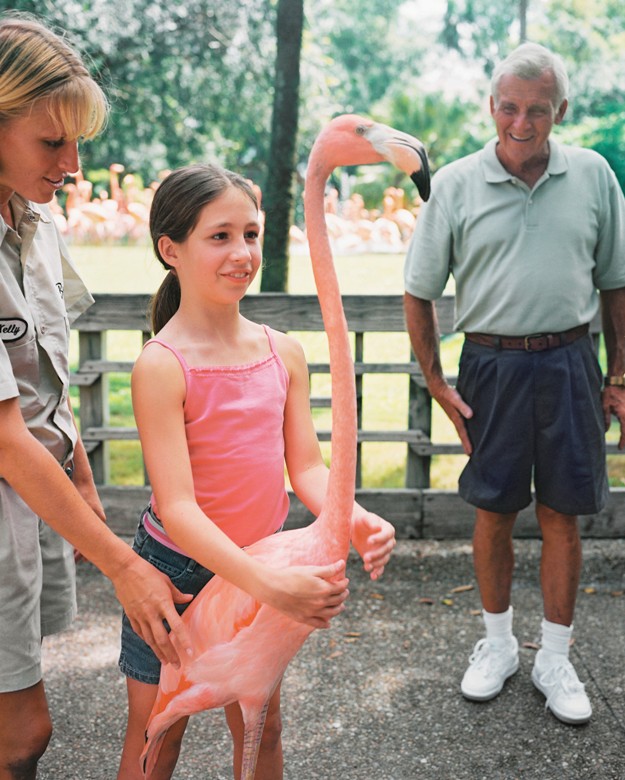Families learn about wild animal care at Busch Gardens in Tampa FL


By Eileen Ogintz
TAMPA, FL (Day 1 of 2) — The crowd is waiting excitedly.
No, not for a celebrity or the chance to ride the newest theme park coaster, though we are at Busch Gardens in Tampa where a new ride is about to debut.
We’re at Busch Gardens state of the art Animal Care Center where guests can watch the park’s vets do surgeries (like repairing a Bald Eagle’s broken wing), wellness exams and more as the park’s vet team works to keep 1200 animals healthy. Injured or sick animals rescued from the wild are treated here, along with the gibbon that is coming today for a complete physical exam.
In one part of the Center, a group of summer campers—Busch Gardens runs many camps, including week-long overnight camps—are busy creating “enrichment” toys and boxes for some of the animals using pine cones, scented strips of paper, honey, paper towel tubes, among other things.
“It’s really fun,” said 9-year-old Haley. “I got to feed an armadillo!”

Aurelia and Adrianna Pavlik are from South Carolina and are enrolled in camp this week while their parents attend to business in Tampa. “They said they’re jealous of all we’re doing,” Aurelia said.
The operating room is state of the art as guests watch through floor to ceiling windows. At the pathology station, they can see on a large screen what the scientist is seeing under the microscope.
“Kids are fascinated. They come right up to the glass to watch,” said Dr. Dominique Keller, one of the park’s senior veterinarians, explaining that when the procedures are complete, the Vet will get on the microphone and explain what was done, what they found and the next steps.
“Absolutely there are some future vets here. The kids ask more questions than the adults,” she said, adding she was thrilled when a little girl opined that girls could become Vets!
Certainly Busch Gardens has its share of world-class Coasters — the Cheetah Hunt, the about to open Falcon’s Fury (the tallest freestanding drop tower in North America at 335 feet) and Gwazi wooden coaster among them — as well as a Sesame Street Safari of Fun area for the youngest park goers.
But what sets this park apart, of course, is the chance to get up close to so many animals. Watching the animal surgeries and exams are free. A tip from Dr. Keller: more of the procedures are scheduled in the morning so stop by as soon as you come to the park. There are also behind the scenes tours at the Animal Care Center and elsewhere.

We signed on for the Serengeti Safari ($39 per person) where we rode out in a truck to watch the rhinos (did you know the difference between the black rhinos and the white rhinos is about the shape and size of their lips?), the antelope, zebras and more grazing and lazing in “the wild” – 65 acres.
Did you know giraffes eat 60 pounds of leaves a day? The highpoint was feeding Ruby the giraffe lettuce. “That alone was worth the price,” said Kim Avant, here with her husband and three sons from South Carolina.
“Touching the giraffe was cool,” said Jacob Avant, 15.
“I liked getting so close to the rhino,” added his brother Jace, 10.
At Jambo Junction, another crowd is gathered to watch the trainers work with the elephants. They only get positive reinforcement, we learn, no punishment. Would that work with kids?
My favorite part was a peek behind the scenes where 100 or so of the “animal ambassadors” live. These are the creatures who go to schools and events—they get their own airplane seats—and are also out and about in the park, like the beautiful pink Flamingos. Kids are invited to join their parade as they strut through the park or to feed them here.
We meet Gloria, a white skunk and Benny, a Red Crested African bird. There’s Ollie, the 3-banded Armadillo who curls up into a ball and Macaws Rainbow and Safari. “Spork” the Spoonbill is being trained to fly between guests.
Jose Dominguez, an education supervisor, explains the animals are a great way to engage kids about what they can do at home that will have an impact on protecting animals in the wild—To that end, SeaWorld parks has launched a new Generation Nature all about how kids can make a real difference in conserving wildlife with 15-year-old Bindi Irwin as their guide. There are interactive games and plenty of amazing animals.
“We tell the kids they can act locally,” says Dominguez, “and have an impact globally.”
